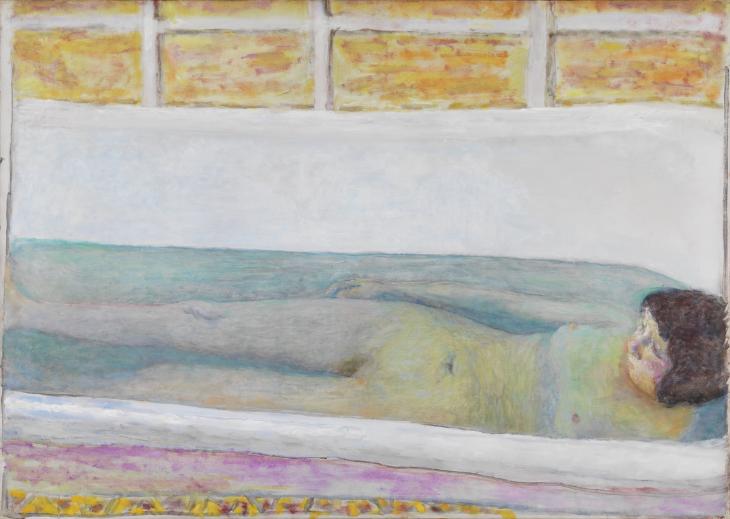This text was written as an intro to a radioshow I curated with Noortje van den Eijnde, presented by Molk Factory, and was part of the introduction I wrote for her solo exhibition at iCOON, Room for You! — Studio Noralie, in Hoek van Holland.
On Bathing
Imagine yourself in a tub with nothing but the sound of a dripping tap. Your knees as twin peaks above the water, your stomach folded into sandbanks underneath, your ribcage moving up and down, making small waves.
As a kid, I shared the water with my sister and our plastic boats. We climbed the edge like pirates. Bathing was not a passive act, but a physical exercise. We sat on our knees, stood on our toes, laid on our bellies, fully immersed in the stories we created. One could slip and break one's neck, one could trip and lose one's teeth. These were real concerns, but they were not our concerns.
As a teenager, bathing had become a private, more solemn, act, requiring doors to be locked, blinds to be shut. In that solitary space, I examined my nakedness through the gaze of imaginary others. Before getting out, I would watch the warm water form small whirlpools above the drain, waiting for the cold shivers to run up my spine, like spiders.

Lo que el agua se llevo (1938)
Painting by Frida Kahlo
In the memoir ‘The Red Parts’, poet and novelist Maggie Nelson describes how, as a teenager, she would lie in the bathtub with two coins on her eyes, contemplating her inevitable passing into the underworld. Maybe that was what I was doing: practicing my own death in the cask that is the modern bathtub. Life’s a stage, or it was back then.
Bath tubs are awkward. Designed to hold one's head up, the tub forces the body into an uncomfortable L-shape, leaving no space to stretch one's legs or raise one's chest. In that confined space, we wait for the water to soak, rinse, and hydrate our individual bodies, before it flows back into a collective sewer.
Connected to an invisible pipeline system that is thousands of kilometers long, the private tub acts as a vessel for clean water to pass through. The water travels far, but we do not take part in its journey. The unruly world is kept at bay while we navelgaze.

Baignoire (Le Bain) (1925)
Painting by Pierre Bonnard
We turn to the private tub for tranquility, but what it gives us is predictability: a sense of control over an elemental force. We bend the water to our will: not too cold, not too warm, filtered of all that could make us sick. We add artificial, fragrant bubbles, just for the vibes. Everything’s measured. But as novelist Jeanette Winterson reminds us: “Our world is as extravagant as the world can be. We are the ones obsessed with measurement. The world just pours it out.”
In other words; the water doesn’t care about us. It runs wild, despite our best efforts to tame it.
As I slide my head underwater, the world starts to pour. My ears confront me with the beating of my own heart, my hair dancing around my face in silent strokes. I want to stretch my limbs, to no longer be enclosed. I imagine my body becoming buoyant, flying, falling, floating in open water. I no longer want to chop this extravagant, fluid world into manageable pieces, but become extravagant, fluid myself.
Not to hide from the world, but to be of this world.
I hold my breath a little longer, looking at the ceiling as bubbles escape my nose. I imagine the bathrooms above me, below me, around me. A still life of unfamiliar bodies in similar postures, all waiting for the water to come, and sweep us off our feet.

Woman Sole in Bath Tub (1976)
Drawing by Domenico Gnoli